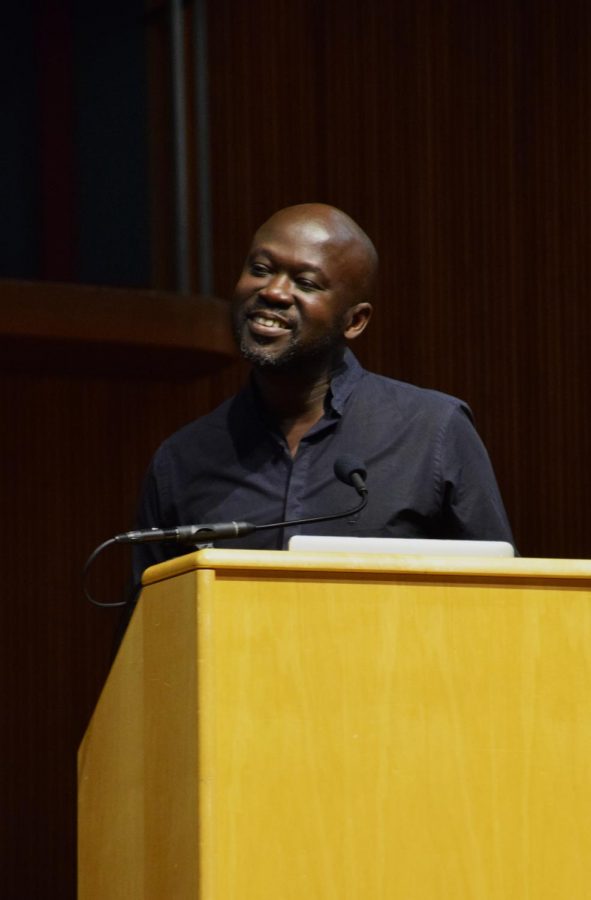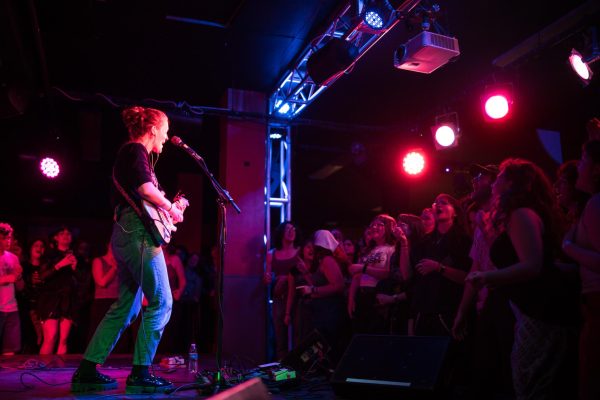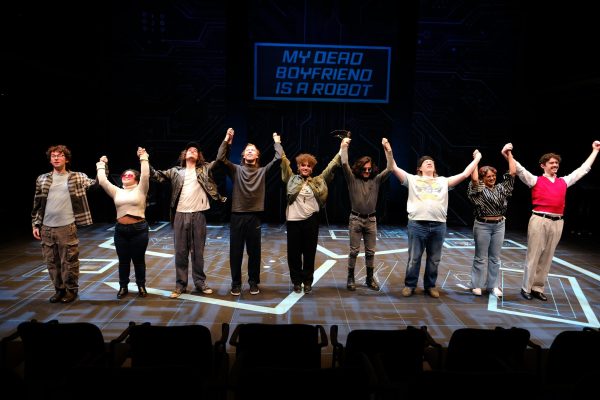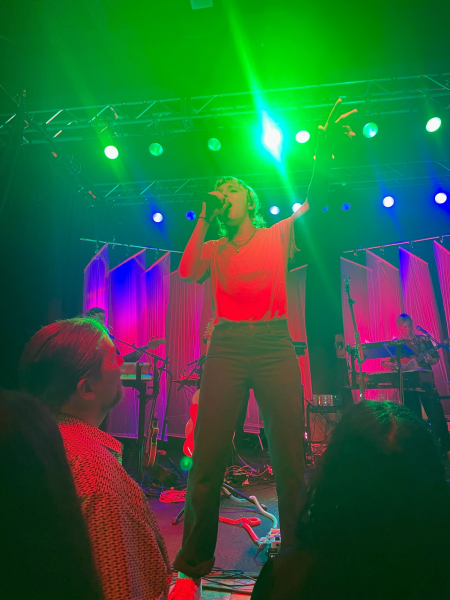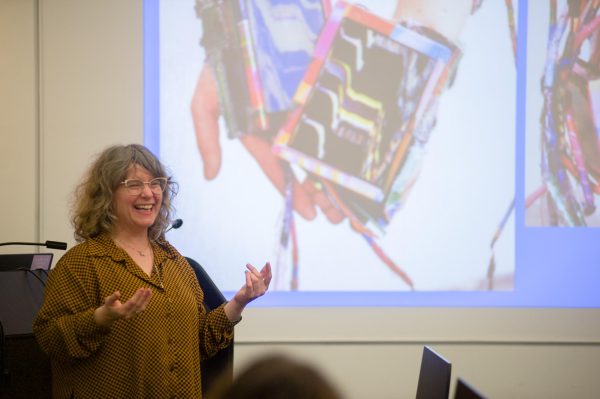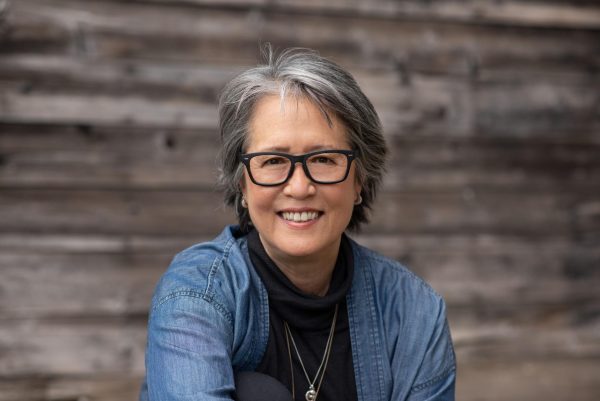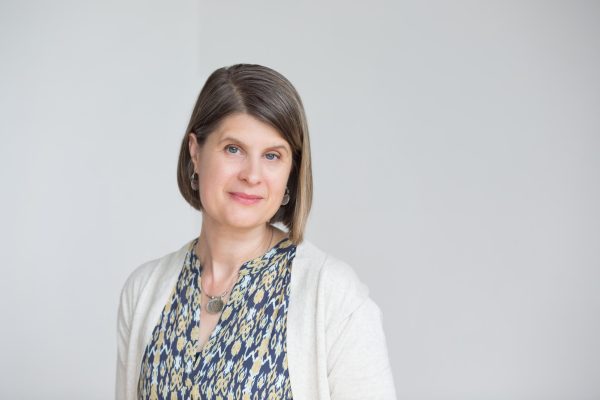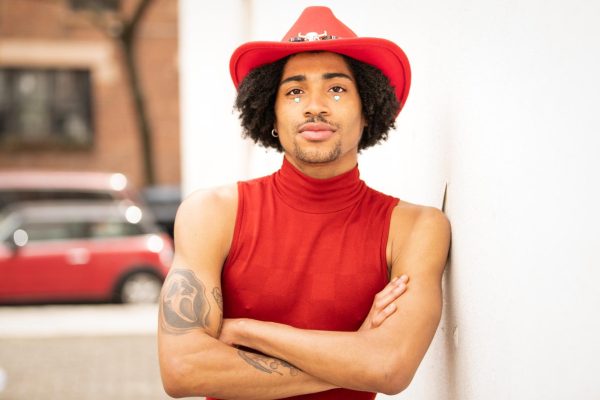On The Record with Sir David Adjaye, Architect
Acclaimed architect Sir David Adjaye, designer of the Museum of African American History and Culture among other notable projects, gave a keynote lecture yesterday as part of President Carmen Twillie Ambar’s inauguration weekend. Born in Tanzania, Adjaye is a global citizen whose work balances both the needs of surrounding communities and his own fascination with material science. Adjaye was knighted by Queen Elizabeth II in 2017 and named as one of TIME magazine’s 100 Most Influential People last year.
This interview has been edited for length and clarity.
What’s your process for approaching a new project? Where do you start?
So I start by not sketching. I try very hard not to draw when I have a new project, but I start by collecting information. I used to do it with my architects, but now I have research teams that work with the architects, and basically we start with a little sociological experiment. We go into the communities, we try and get formal and informal stories. We go into bars, we chat with people … we try to get a feeling of a place. That’s a critical part of starting. And then there’s a kind of pin up in my studio at a certain part when we feel like we’ve saturated and we’re getting repeats and we sort of understand what’s going on. And then that’s when the creativity starts. I start to work out a matrix of things that make sense to start to informally [design], and that’s when I start to sketch.
So when you go to the Museum of African American History and Culture, you start in the bottom of the museum. Is this something you included in the design, and how does it reflect the African American experience?
Absolutely. So the exhibition design was done by an exhibition designer, but the narrative of how you use the space was done by us. The whole premise of the project was that [in] a typical museum, you come into a lobby or an atrium, probably, then you go left or right and up a series of stairs, and you come back into the lobby. We really wanted to turn that on its head, and to go deep into the ground first.
Now, most museum specialists will tell you that’s the worst thing to do, because no one likes to go down and then nobody likes to go all the way up. But I said that it was compelling and very important, because the story was about a certain kind of going into the matter of things. For me, the earth represents a past, a history, layered and built up on, that you literally went into. In it, there was no daylight, because it’s the past and it’s gone. We could use it to talk about that. And then we would start to use the light and the views to unfold the migration, and then the cultural explosion. You can use the light and the context of the windows to actually choreograph that. And that’s what the exhibition does as you go up, and that was really important to the way in which we designed the museum. Thankfully, they didn’t deviate from that.
And what you said in the talk about congestion within the first exhibition gallery really rang true. I remember feeling that way in the space.
That was important, because also, we didn’t want to make literally a galley ship from the 16th century. But actually what was going on was that those were the scales of galley ships. You know, eight-foot [ceilings], claustrophobic, packed in. And you know, in a way, we just wanted you to feel that a little, but not be too literal. So that’s what’s going on with that. And what’s good about that is that it sets up that moment when you suddenly come into the main hall, because it’s such a release and you’re like, “Oh my God. What just happened?” And then you realize, you’re in another period. And then you unfold. Space and emotions.
Oberlin was the first institution in the United States to admit African-American students. What does that legacy mean to you and your decision to speak at President Ambar’s inauguration?
It’s part of the reason I’m here. I’ve always wanted to come to Oberlin; I knew it was the first school that did that. It’s always had a very important figure in my mind. And it’s wonderful to see the alumni in their 70s and 80s, just walking around still, and [I] was just like, ‘wow.’ It’s very touching for me to be here.
I want to ask you about your Sugar Hill project, which I was able to visit a few years ago. Can you speak a little about that project, especially its mixed-use features?
Well, the Sugar Hill building is trying to be a little piece of resistance to the typical model of gentrification and development that happens in New York. You know, it was really trying to make a project that deals with the strident issues in the community — [for example], homeless housing. You know, nobody wants to talk about big bucks, so nobody is doing it. Community [spaces] are really important for these neighborhoods that are growing and getting bigger and there’s not enough of [them], or they’re in basements, or in out-of-area places. To try to make a ground plane that’s not about shops, not another Starbucks, but about community infrastructure.
It was about that infrastructure, and [figuring] out a way to support it. To create, in a way, a neighborhood destination. By doing that, we would counter the stigma that, ‘oh, that would be the building where the homeless people are,’ and nobody would want to go. [Instead it would] become, of course there are homeless people there, how amazing, but also we have the great [Sugar Hill Children’s Museum of Art & Storytelling] and it’s the place where my kids go. It sort of created a reversal of the negative stereotype that you’d have on such a thing, which is very important to me. We worked really hard with the client to develop the programs that were specific to that.
At one point, we were considering just putting a shop in there. I remember just being so upset, you know, and thinking, God, if we put another shop here, we’ve sort of lost. It would just sort of be whatever, another bodega, and that’s not what the neighborhood needs. Absolutely not another Starbucks, and definitely not another bodega. It was just like, no. Actually, I was also working with them on the Studio Museum at the time, and I got the Studio Museum to come in and talk to them about how to make museums.
From that conversation, the idea of a storytelling museum was born. It literally was invented for them, and it came out of the fact that they were really invested in looking after young kids as part of their program. This was an opportunity to maybe do something that could support that teaching, but maybe be a neighborhood facility. And it’s amazing. It’s become the neighborhood thing.
TIME named you one of the most influential people, you’re well-known for designing the museum and other buildings — how are you experiencing this newfound fame?
You know, it’s really interesting. I think for me, it’s really allowed me to have more access to more places and more things. So, for me, fame is a tool. I’m actually not interested in fame. I’m interested in using it to do what I need to do. So I’m able to talk to leaders, to talk to city mayors, etcetera, in a way that they listen more carefully now than when I was just David Adjaye the architect. For me, I use it that way, and I really value that and treasure that.
Your work is grounded in the community that surrounds it. How do you grapple with the history of a certain location when you’re designing a new building? How do you design a building that is both rooted in the past, in history, and also one that looks toward the future?
So, one thing I always say when we do that research, is [that] we’re not trying to represent the history or trying to say [that] we’ve got all these stories that we think matter and now we’re going to make a building out of that. It’s deeply personal in the end, because I’m the creative person, so it’s autobiographical. It’s almost like a writer writing. I can go into a community and write about something, but what I choose to pick up on is how I creatively work. I always say, I could pick up on something that was just sort of there.
For instance, with the Sugar Hill building, the rose [motif] idea was really putting together … somebody talking about the Aretha Franklin track in a bar. That’s where it came from. And I thought, that’s amazing, there used to be these [rose] farms [in Harlem]. Why don’t we put those two things together? That was not a community conversation. I made that up. But it comes out of the community, and it’s interesting that it then became part of the story of the building and the story of the place.
It’s really how I creatively listen and put things together, rather than making something that represents other things. … I would always fail if I tried to do that. I need to give myself that moment of the creative synthesis, which is finding out about stuff, and then [figuring out] what I’ve got to do. The gap between those two things [is] the moment of creativity, you know, that’s the creation.
What role do materials and light play in your designs and the story you’re trying to tell?
I believe that we live in a physical world, and that the manipulation of physical materials is really important. Material science is really important. Without understanding material science, you’re not able to understand how to manipulate things. I’m interested in being able to manipulate matter, like I want you to not realize that this is concrete, or I want you to think that this is really light. I can’t do that by just imagining it. I have to kind of understand it.
I’m deeply interested in the way in which material science kind of works, and how it emotionally affects us, and then fundamentally, I’m interested in gravity and weight. The idea that gravity is an eternal position, and we can’t get past it. … In my forms, there’s always this idea of weight, and then this idea of light. Light is what allows us humans to see each other and to express our relationship to the world. These three things are the three key pillars of what I do.
What changes are you seeing in the field? Do you think there’s a growing need for architecture to be responsive to the community, and how is technology changing how you approach a project?
Technology is so important in the field. We use more technology than ever before. Mapping, getting data, sunlight studies, the sort of things that I do — we can’t do them without the data and the software we use to map out how the light works, etcetera. So I’m not guessing and being really clever, I’m literally just mapping it out.
But I think that my generation is really interested in the way in which we can reconcile technological advancements in construction, which happened at the end of the 19th century to the 20th century, and how we can bring back stories. How we can make stories, which is the history of architecture, connect back to place, which connects to people. We think the 20th century was amazing, but it was all about technology and construction. It didn’t have the storytelling. We think that the beginning of the 21st century is about telling stories again, and making architecture humanist again.


